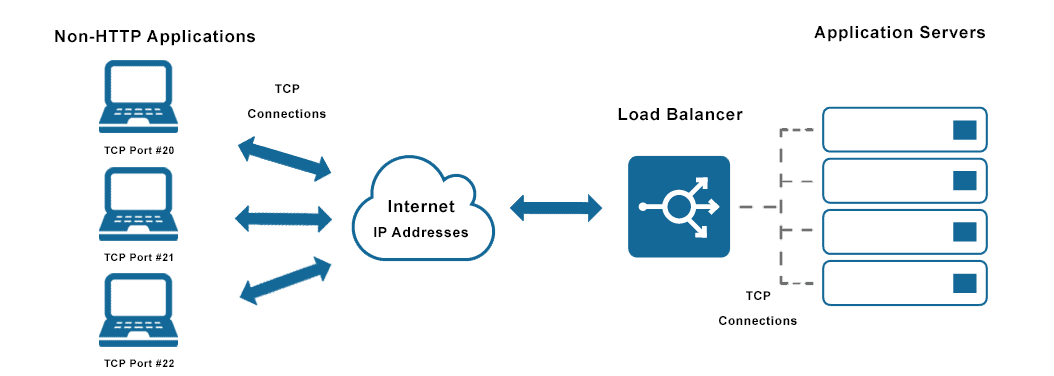TCP Load Balancer Definition
A TCP Load Balancer uses transmission control protocol (TCP), which verifies information sent to internet protocol (IP) addresses. It ensures the data arrives error-free to non-HTTP applications.

What Is a TCP Load Balancer?
A TCP load balancer is a type of load balancer that uses transmission control protocol (TCP), which operates at layer 4 — the transport layer — in the open systems interconnection (OSI) model. TCP traffic communicates at an intermediate level between an application program and the internet protocol (IP). A TCP load balancing configuration provides a reliable and error-checked stream of packets to IP addresses, which can otherwise easily be lost or corrupted. Each application is assigned a unique TCP port number to enable delivery to the correct application and to provide health checks.
How Does a TCP Load Balancer Work?
TCP load balancers are for applications that do not use HTTP. When deployed in front of a database cluster, a TCP load balancer spreads requests across all available server configurations. Any application data destined for a server is forwarded to the available server over a new TCP connection. Separating (or proxying) the client to server connections allows for enhanced security, such as TCP protocol sanitization or DoS mitigation. It also provides better server performance and client connections.
TCP Load Balancer Versus HTTP Load Balancer
HTTP load balancing is a simple HTTP request/response architecture for HTTP traffic. But a TCP load balancer is for applications that do not speak HTTP.
Can Application Load Balancers Work At TCP Level?
Yes. An application load balancer can work at TCP level as long as it is at layer 4 of the open systems interconnection (OSI) model. This is because TCP load balancers are for applications that do not use HTTP. Layer 7 in the OSI model, for example, expects all network traffic to be HTTP. But a load balancer operating in layer 4 will read the TCP packet information and direct the communication to the right place. The “level” of a load balancer refers to how far back up the network stack that a communication must travel before it is directed to its final destination. An application load balancer route based on TCP has less latency because network communication does not have to go all the way up and back down the network stack at the load balancer.
Does Avi Offer a TCP Load Balancer?
Yes. Avi Networks’ intent-based Software Load Balancer provides scalable application delivery across any infrastructure and any level in the networking stack (L4-7). The Software Load Balancer forms the backbone of Avi, providing speed, performance and reliability for modern enterprises. Learn more about Avi’s TCP load balancing configuration.
For more on the actual implementation of load balancers, check out our Application Delivery How-To Videos.
For more information on tcp load balancing see the following resources: